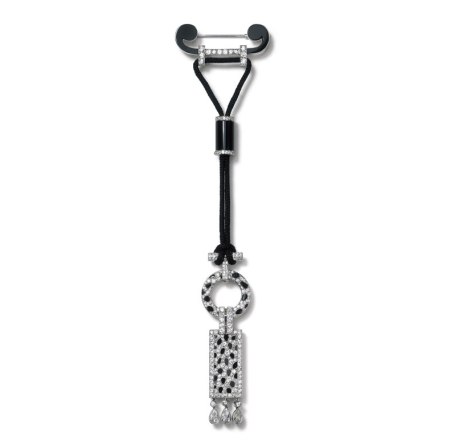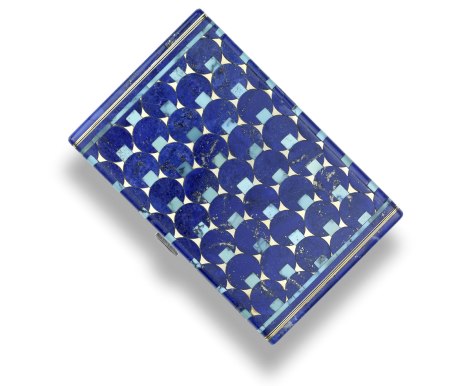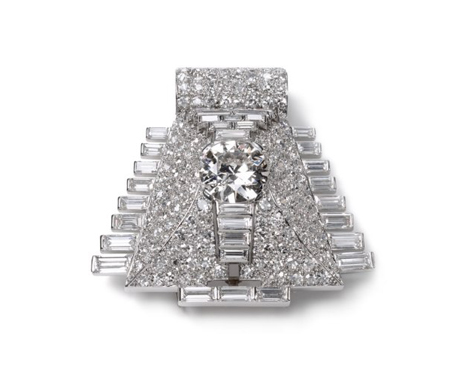The Art of Cartier

Modern Style and Art Deco

As early as 1904, there appeared designs notable for their geometric lines and abstract shapes that broke with the Garland style. The year 1909 was characterized by a major artistic event: Serge Diaghilev’s Ballets Russes triumphed in Paris. The troupe’s explosive use of colour juxtapositions entranced Louis Cartier. One of his favourite combinations was blue and green, which was translated into a beautiful blend of turquoise, lapis lazuli and jade or the more precious sapphires and emeralds. Onyx was used from the 1910s and would become a favourite Cartier material. It would enhance diamonds and reinforce the lines of a piece of jewellery. In 1914, one of the classic Cartier motifs made its first appearance: the “panther-skin” pattern of diamond and onyx [fig. 5]. From the 1910s to the 1930s, polished rock crystal became another much-loved material for Cartier.

fig. 5. Panther-pattern watch-brooch.
- Propiedad
- Cartier Paris, 1915
Indeed it was well before World War I that Cartier anticipated a new style which would later be dubbed “Art Deco” in reference to the 1925 Exposition internationale des Arts Décoratifs et Industriels Modernes. Purely geometric forms became limited to the framing of brooches or to the decorative patterning of objects such as cigarette cases [fig. 6].
 |
fig. 6. Cigarrette case
- Propiedad
- Cartier Paris, 1930
At the end of the 1920s the Art Deco style began to echo the use of light platinum and the brilliance of diamonds that had characterised the tonal values at the beginning of the century. Audacious stone cuts were used, such as the baguette-cut diamond: its straight-edged, simple form visually conformed to geometric Art Deco lines. The distinctively flat and smooth¬surfaced designs successively developed into more voluminously styled creations during the 1930s as jewels began to appear distinctively three¬dimensional [fig. 7].
 |
fig. 7. Pyramid clip brooch.
- Propiedad
- Cartier Paris, special order, 1935


